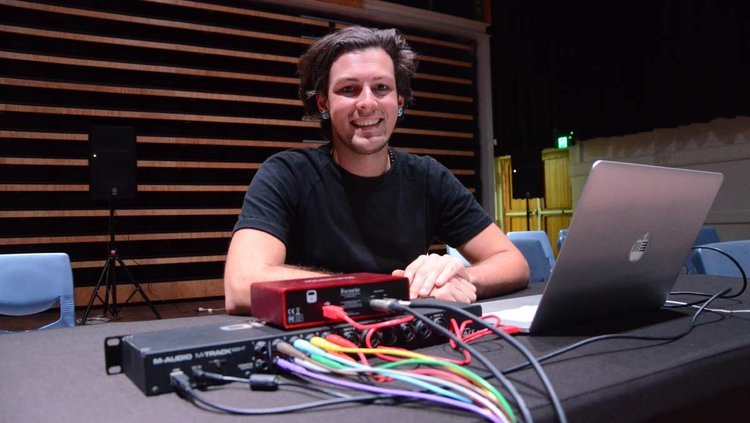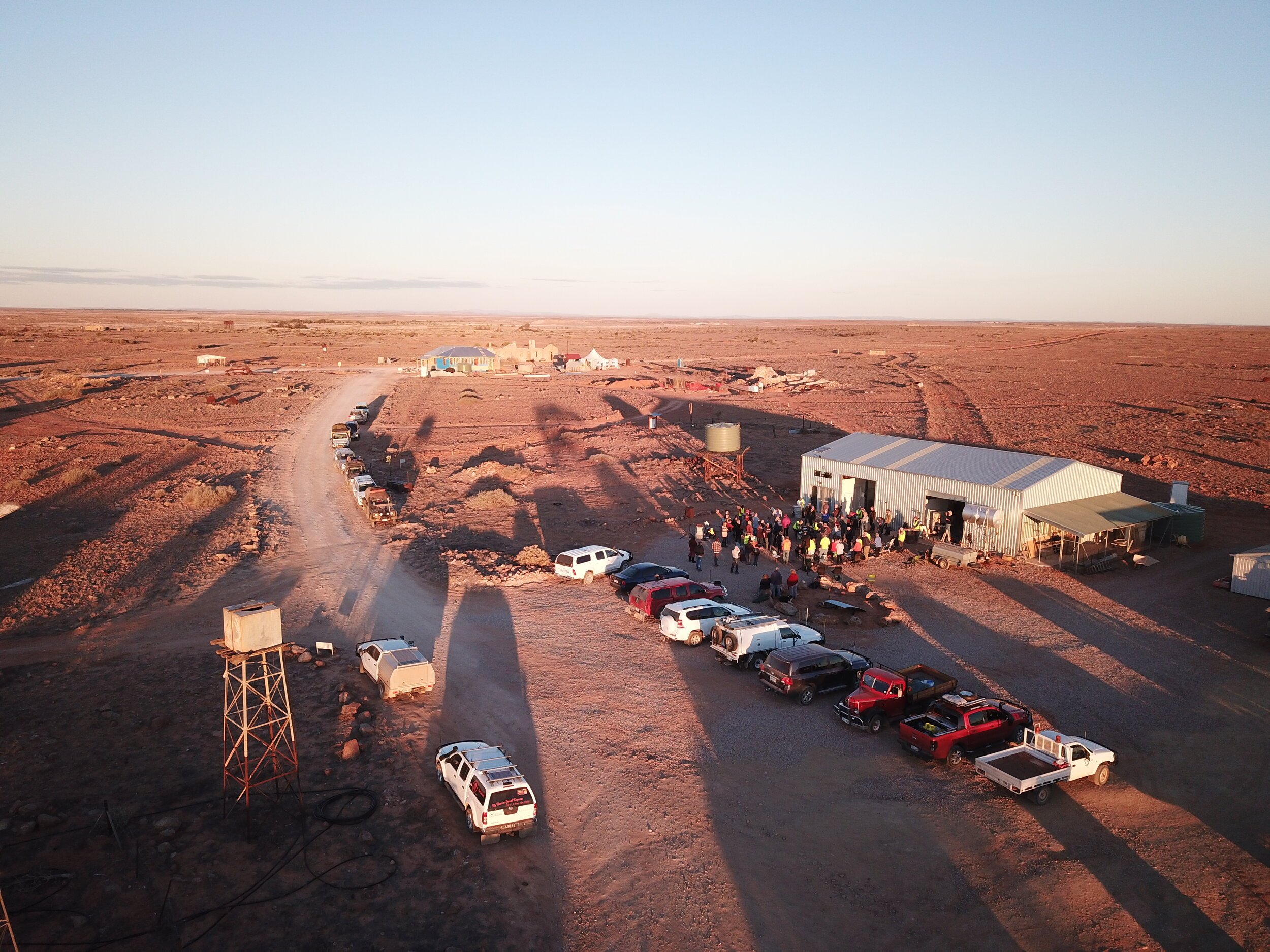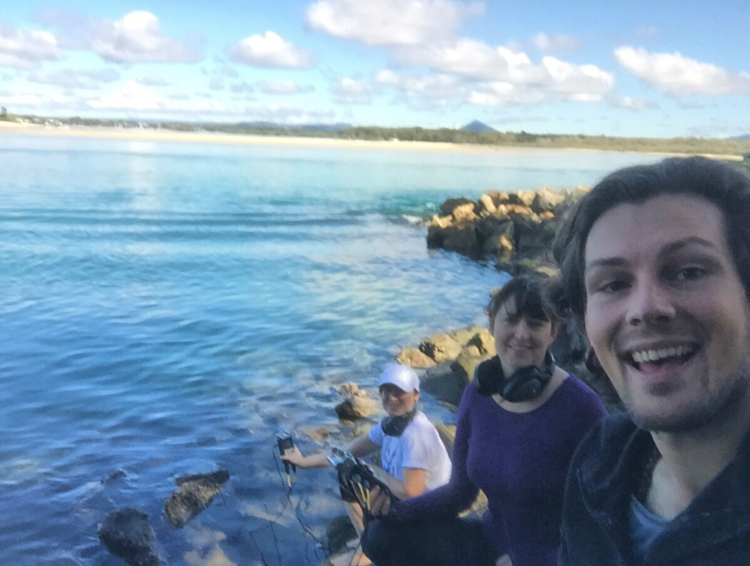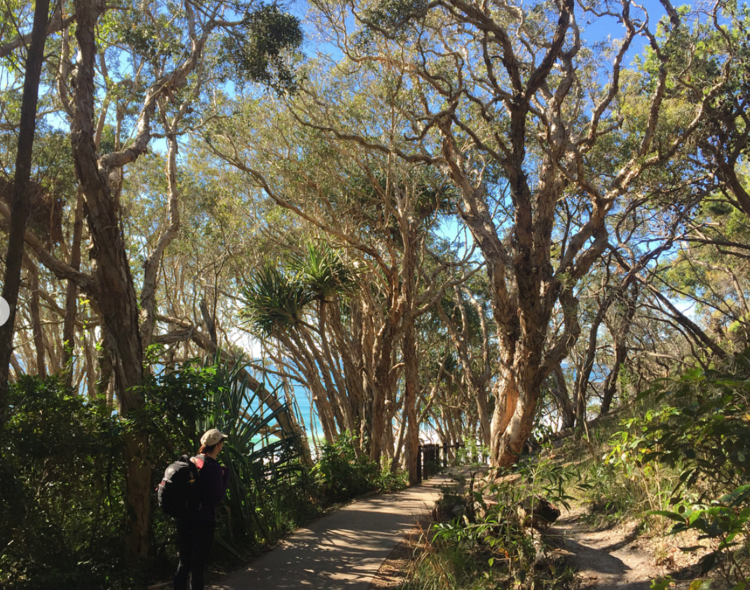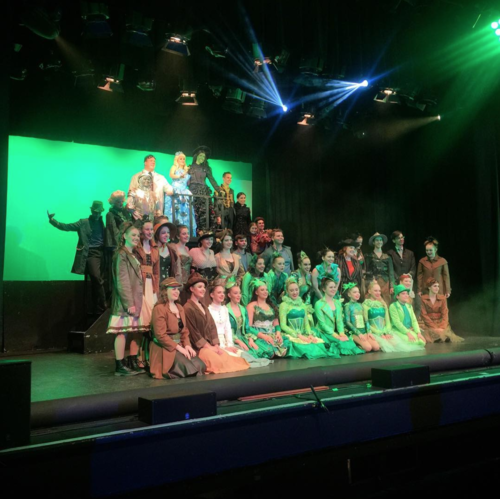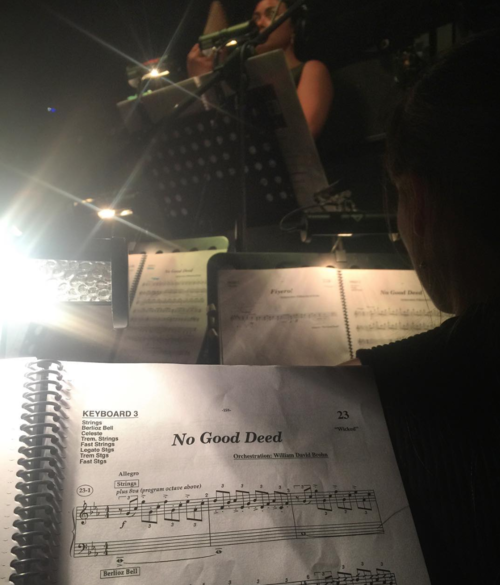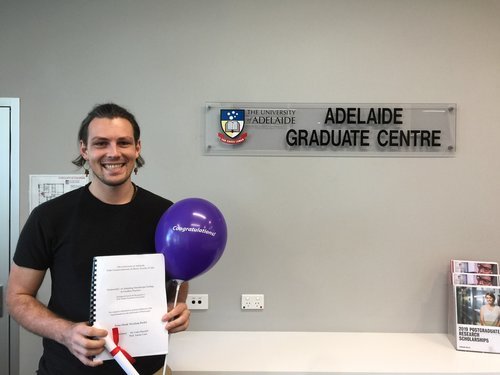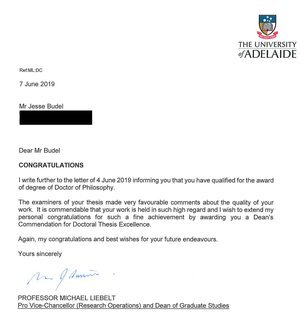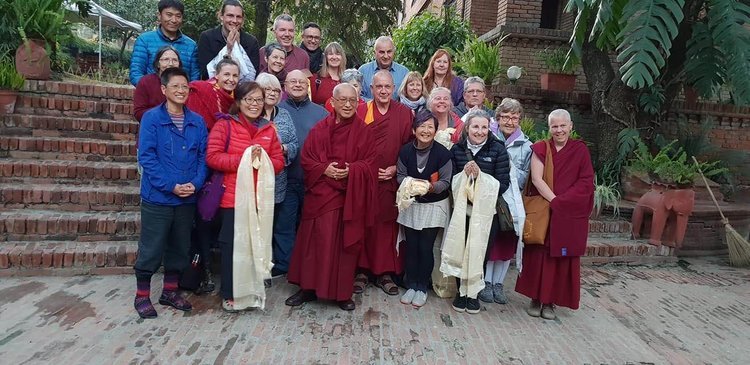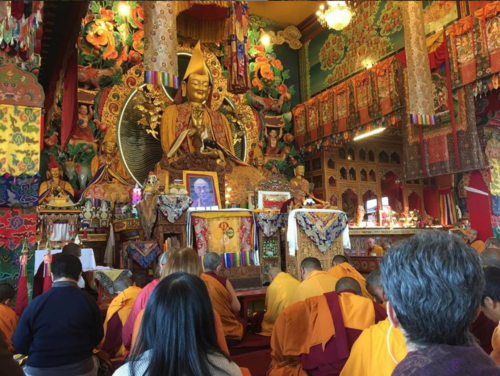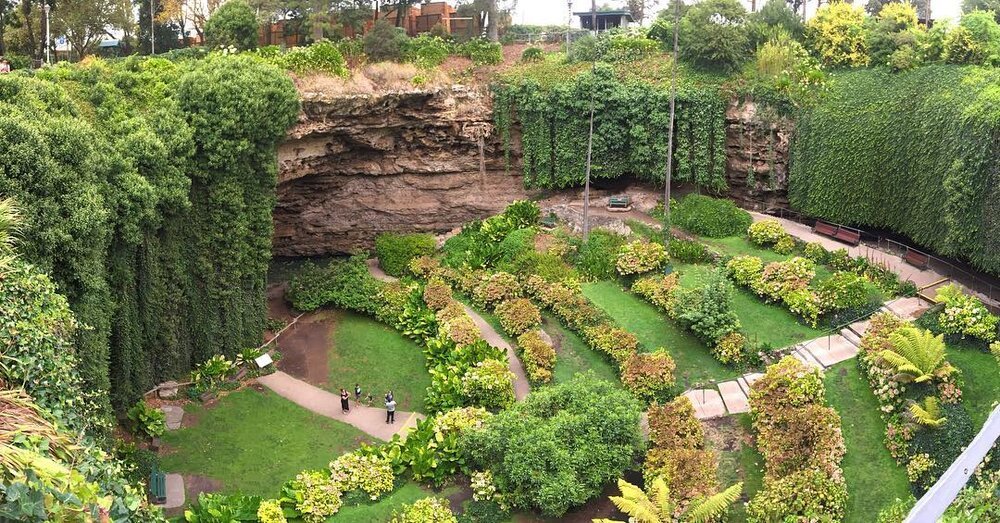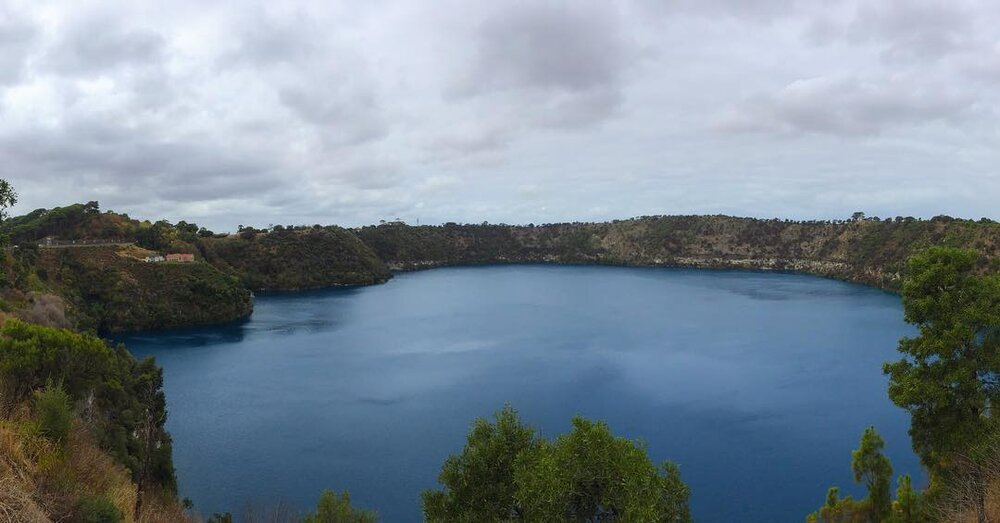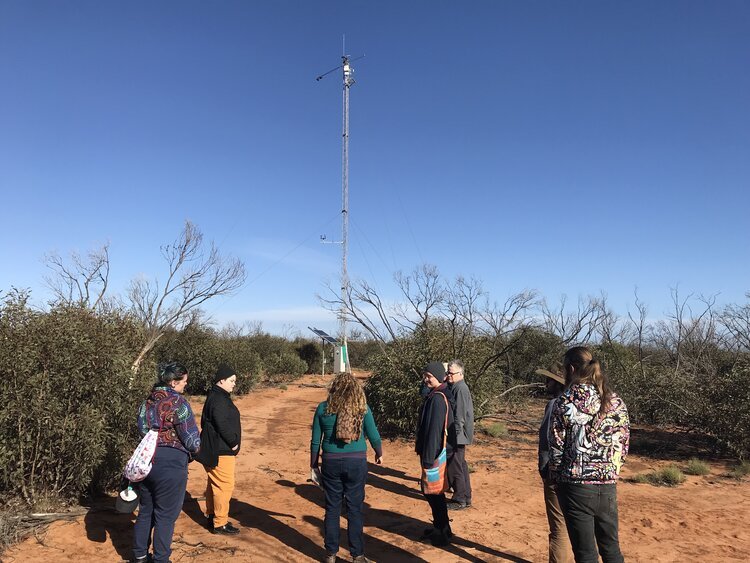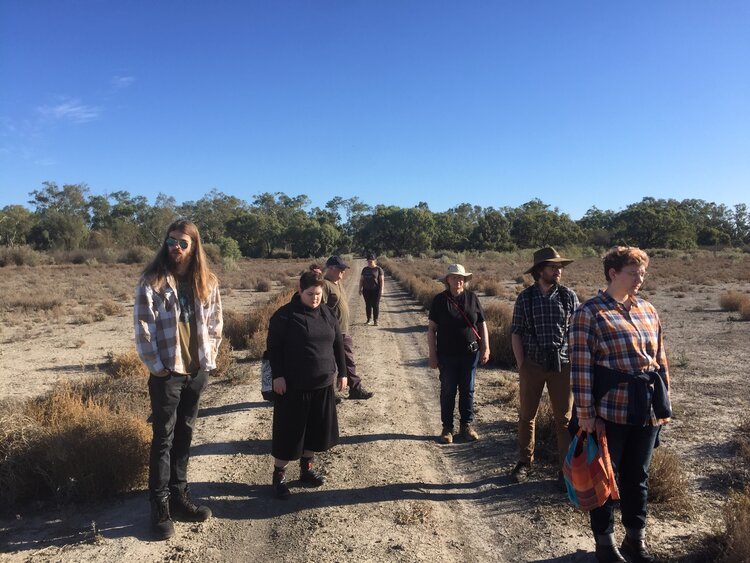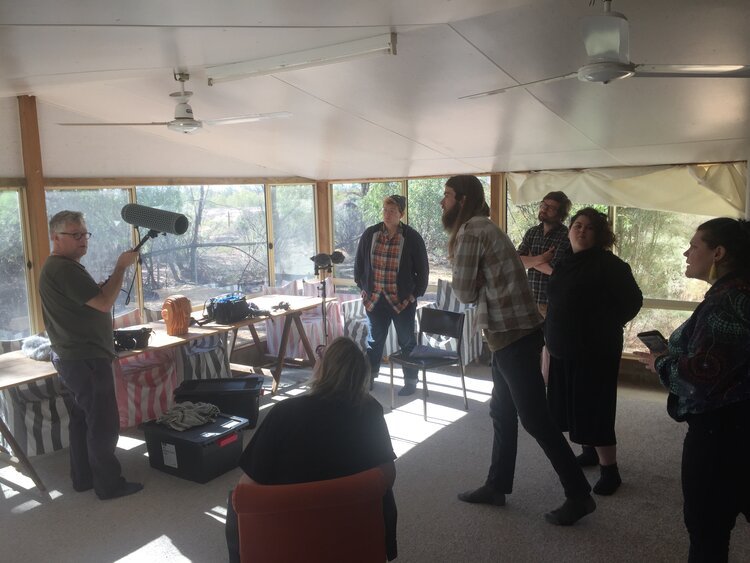October 2019: Beginnings, Endings and the Inbetween
Hi everyone!
It’s been well over a year since my last newsletter, with lots of activity and time for reflection in between.
I began writing this post back in January, an aptly-named month inferring Janus, the two-faced deity of the Roman pantheon who governs beginnings, gates, transitions, time, duality, doorways, passages, and endings.
Looking backwards, 2018 was a flurry of activity from start to end. In January, I was assistant musical director and repetiteur for Shrek with Adelaide Youth Theatre, and in February, my installation A Day In An Alleyway for the Adelaide City Council’s Soundscape Program kicked off, complemented by its sister installation and performance in Featherstone Place in April. I’ve written about the earlier parts of this year in greater detail, which you can read here.
presenting Immersed at the Murray Bridge Town Hall, June 2018
In May, I presented Immersed: A Concert of New Surround Sound Works at both the University of Adelaide and the Murray Bridge Town Hall. Featuring works by myself, Alex Rodhe, Josh Warry, Leah Blankendaal, Rob Seaback, David Nguyen and Lucas Marshall Smith, the concert was reviewed in the Murray Valley Standard (with some video of David’s piece, Misprints, included).
Mid-year saw the presentation of new works and travel. I had a new work, Before C, premiered at the PianoMax Extravaganza concert as part of the SA Accompanists Guild Festival. Not long after, in mid-June, I travelled with percussionists Vanessa Tomlinson and Joshua Baldwin to the ghost town of Farina in SA’s Far North. Here, we collaborated with volunteers from the Farina Restoration Group to form a community percussion orchestra and present Farina, a site-specific work which looked at the changes to the Farina soundscape over the past 140 years represented through changes in animal species, weather patterns and human industries in the area. Leonie Kerley’s and Melanie Sjoburg’s newsletter entries document the process and experience of hearing the work performed, the recording of which you can hear on Soundcloud.
Drone shot of the Farina performance, June 2018
Later in the month, I travelled to Brisbane to present at the International Ecoacoustics Congress, held at QUT and Queensland Conservatorium. Alongside presenting an alternate version of the Featherstone Place installation, my paper Sonic Ruptures in Featherstone Place: An Ecoacoustic Approach to Urban Sound Installations received best student paper in the Creative Paper stream. The Congress was rounded off by a multi-day field trip to the Noosa area, visiting the rainforests of Mary Caincross Scenic Reserve and Noosa Biosphere Reserve. In September, my exploration of Biosphere Reserves continued, visiting Wilson’s Promontory Biosphere Reserve in Victoria, making field recordings along the way of the 40km hike of the Eastern Circuit.
Snapshots from the Ecoacoustics Congress field trip, June 2018
Seeing out the year was a critically-acclaimed production of Wicked with Adelaide Youth Theatre, a half-year project for which I was assistant musical director and repetiteur. This was an incredibly rewarding experience working alongside 80 budding musical theatre performers, as well my dear friend Jennifer Trijo, and has made Wicked a show I’m incredibly keen to MD sometime in the future.
The Wicked cast, and views from the pit, December 2018
The end of the year also marked the submission of my PhD, both the end of a four-year research journey and the beginning of the examination process. In March 2019, I received examination feedback (pass, with minor changes), and with hand in of the final version in early June, the PhD was finally conferred, as well as awarded a Dean’s Commendation for Doctoral Thesis Excellence. And in September 2019, I finally graduated in the all-too-familiar surrounds of Bonython Hall, the University of Adelaide.
The PhD, ‘Ecotonality, or Adapting Soundscape Ecology to Creative Process: Ecological Sound Art Responses to Four South Australian Ecosystems’ will be available online soon, but in the meantime, you can check out and listen to each of the projects - Mobilong, Long Island, Featherstone Place/A Day In An Alleyway and Farina - on my website.
Arriving here wouldn't have been possible without the support of so many people, a few key individuals amongst them:
To my supervisors, Dr. Luke Harrald and Prof. Aaron Corn, my sincere gratitude for your sagely insights and advice throughout the development of this project, and generous support and patience, especially during the final year. Additional thanks goes to Professor Charles Bodman Rae for for his early supervisory guidance, and to Associate Professor Kimi Coaldrake for her encouragement throughout the postgraduate process. To Christian Haines, Sebastian Tomczak and Jakub Gaudasinski, thank you for your technical support and advice.
For Mobilong, thanks to Bob Chapman, David Loveder of SA Water, and Dr Luke Moseley & Prof. Rob Fitzgerald of the Waite Institute for their generous provision of environmental documentation and invitations of site visits, as well as Lester Wong, Hurley Baker and David Moran for their time recording the string parts. Additional gratitude is extended to Michael Dahlem and Fred Van Gess for their permission to transcribe a very small part of their field recording databases.
For Long Island, thanks to Ken Wells of the Murray Bridge Historical Society, and Gabriella Smart and Dan Thorpe for their workshopping and advice on early versions of the work.
For Featherstone Place and A Day In An Alleyway, sincere thanks to the Zephyr Quartet and BASEM3NT - Belinda Gehlert, Emily Tulloch, Jason Thomas, Hilary Kleinig, Jennifer Greer Holmes, Corinna McLaine and Andrew Tokmakoff - whose sustained artistic, technical and logistical support over two years allowed their rare opportunity for conceptual exploration, testing and multiple opportunities for presentation of this work. Mutual thanks also goes to Scott Krix of Krix Loudspeakers for their generous sponsorship of equipment, and the Adelaide City Council for their support of a Soundscape commission and City Library Residency.
Lastly, for Farina, many thanks to the Farina Restoration Society, Peter and Diana Harris, Vanessa Tomlinson, Joshua Baldwin, and Laurie and Willie at Lyndhurst Pub for your insightful input, community spirit and collective collaborative efforts in seeing this ambitious project through to fruition.
To the AFAE - Leah Barclay, Toby Gifford, Anthony Magen, Andrew Skeoch, Vicki Hallett - thank you for your welcoming acceptance into the Acoustic Ecology community, and professional support over the course of this research. To the Rural City of Murray Bridge, and Melinda Rankin of the Murray Bridge Regional Gallery, my sincere gratitude for your continued belief and championing of this work (especially of early projects Reliquary, The River’s Way and the Murray Bridge Piano Sanctuary). Equally, thanks to Carclew and Helpmann Academy for their contributions which have allowed me the generous time to hone my craft and explore new ideas the world over.
To friends and family, amongst them Vincent, Gabriella, Val, Bill, Bri, Lily, Kita, Will, Patrick, Andrew, Mac, Jennifer, Elaine, Neil, Dawn, Gene, Brooklyn and Lacey, thanks for your loving-kindness and confidence, especially in trying times. To Maree and Steve, thank you for your care and support over the past year. To my mother, Sandra, I am ever indebted for your many sacrifices made to get me where I am today, and grateful for the love and care you have always provided. And to Ash, thank you for joining and sharing this journey with me, all the while completing your own.
Final leg of the PhD - December 2018 to September 2019
When starting this post in January, I thought over whether I wanted to make any resolutions for the new year. Throughout past few years writing these updates, I’ve grown increasingly conscious of the way I frame my professional activities and the impact that this mindset and approach has had on me. For one, I’m conscientious of my subscription to the cult of the overachiever, wherein constant drive and opportunism has led to flurries of activity, all the while veering perilously close to physical, mental and spiritual burnout. An article by Jonno Revanche talks about their move to Sydney as a creative practitioner:
I became thirstier, more ambitious, more resourceful, sometimes because I had to. I told myself it was a necessity. In the process, though, I felt my values stretching. I became self-sacrificial, relentless, tireless in my pursuit of my goals, taking on way too many projects at once, and becoming frustrated when I felt my time and labour was being siphoned off into nothingness by missed opportunities and the endless exploitation of the creative industries… we are so often taunted by the images of those unlucky ones forced into poverty, as if out of nowhere, as if one wrong choice could pull the carpet out from under us and leave us desolate. It’s easy to catastrophise. Aspirational images and sentiments are impressed upon us with unyielding force. We begin to think the opposite of scarcity is plentifulness (ostensibly, hoarded and kept to ourselves) instead of what it could be: "I think abundance and scarcity are two sides of the same coin" says social researcher and writer Brene Brown. "The opposite of 'never enough' isn't abundance or 'more that you could ever imagine.' The opposite of scarcity, she argues, is “enough.”
Jonno goes on to talk about taking the past year more slowly, learning to prioritise “the things that mattered, and to set boundaries. The excitement of instantaneous achievement began to vanish, but I found myself content in other ways. I slowly let myself feel my body again, to enjoy time as it passed rather than let it speed by me, enjoyed the process of slowing down and appreciating the quiet”.
If I’ve had a resolution for 2019, a slower pace has probably been it, attending to my physical, mental and spiritual health holistically, and allowing myself to space to learn, explore and grow outside of the confines of late-stage postgraduate research. Reflecting now three-quarters of the way through the year, I feel I’ve struck something of a balance between this resolve and the continued development of a sustainable arts practice.
In February, I returned to Nepal, where I had previously been on pilgrimage in 2016, again with numerous other students from Buddha House. Basing ourselves out of Kopan Monastery with our resident teacher Gen Thubten Dondrub, we made day trips out to sacred sites around the Kathmandu Valley, including Boudhanath, Swayambunath, Sankhu, Pharping and Namo Buddha. An article of the trip is available on the FPMT Mandala website.
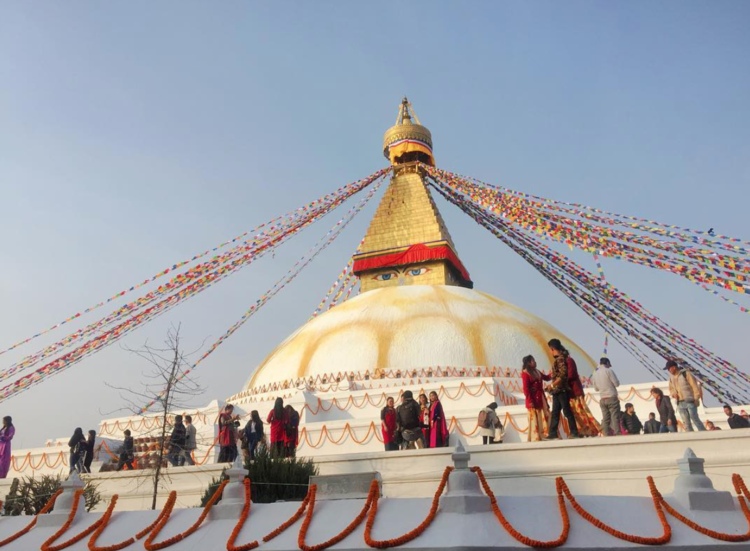
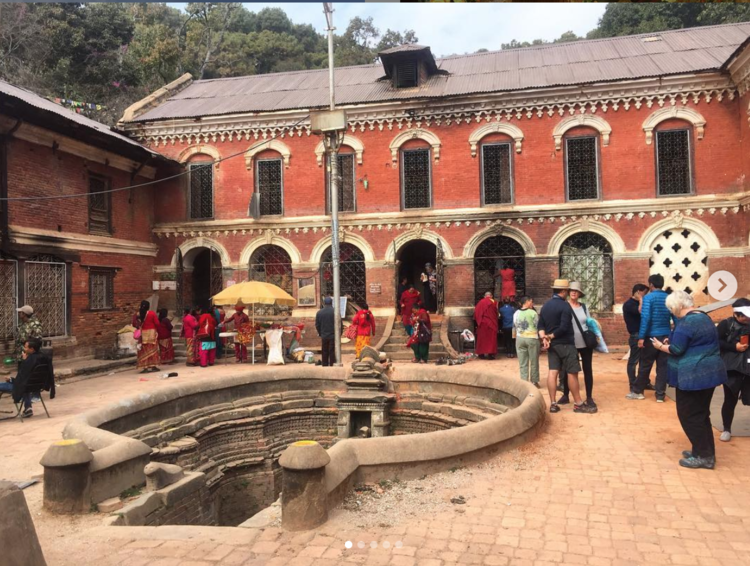
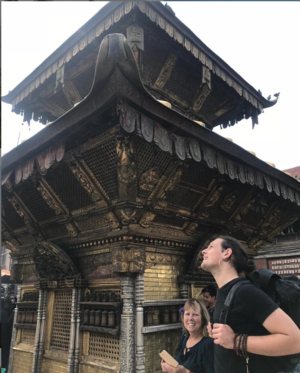
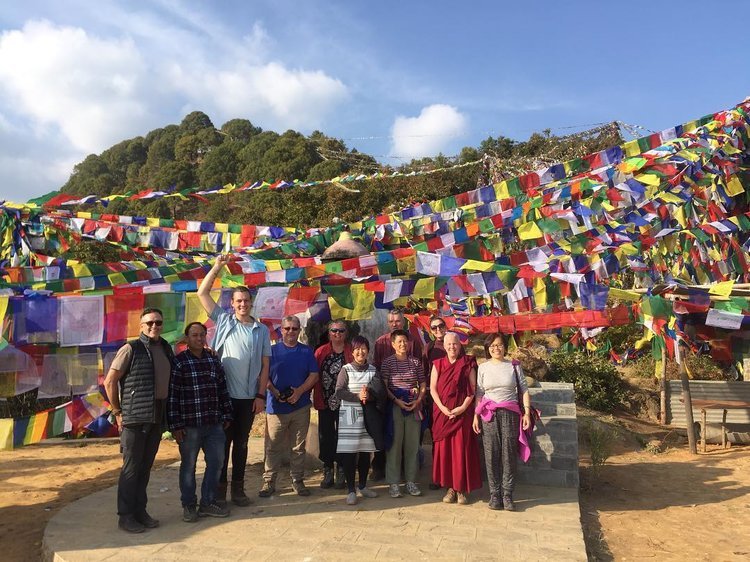
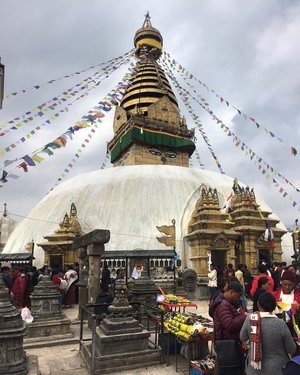
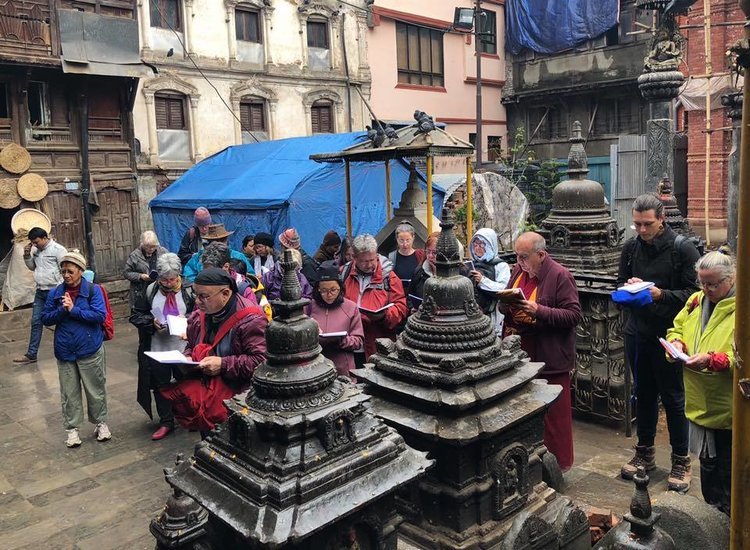
Visiting various pilgrimage sites around the Kathmandu Valley. February 2019.
Our pilgrimage group with Lama Zopa Rinpoche (the co-founder of the FPMT). Sitatapatra initiation. February 2019
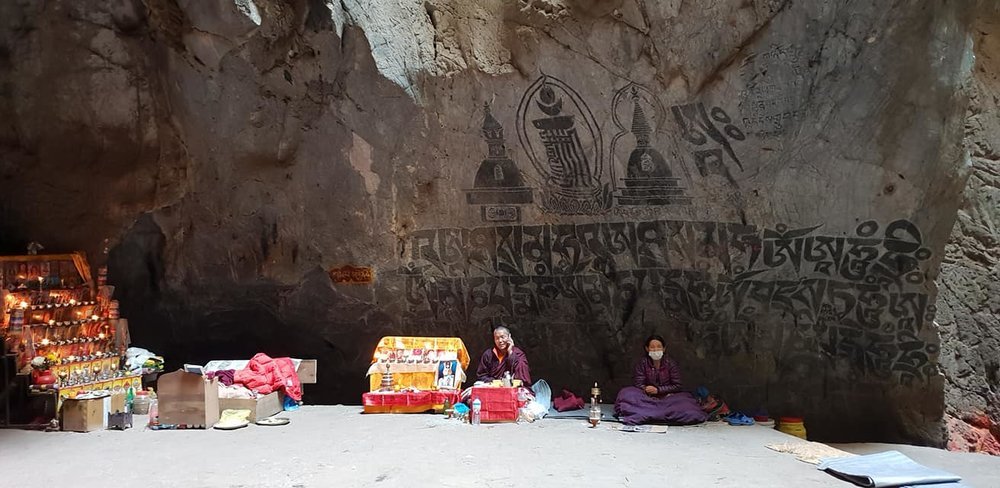

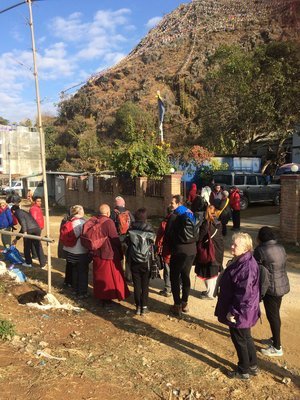
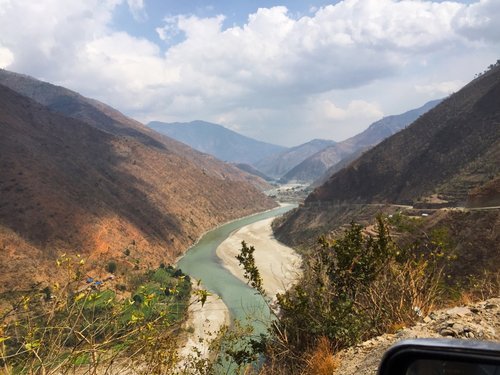

Weekend trip to the Maratika Caves at Halesi, February 2019
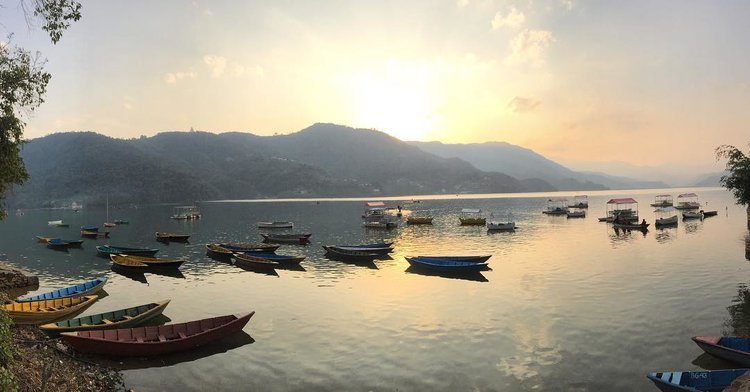
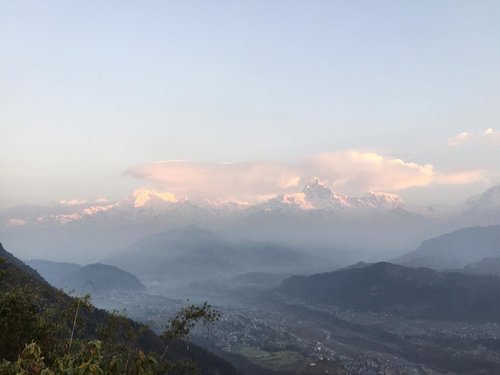
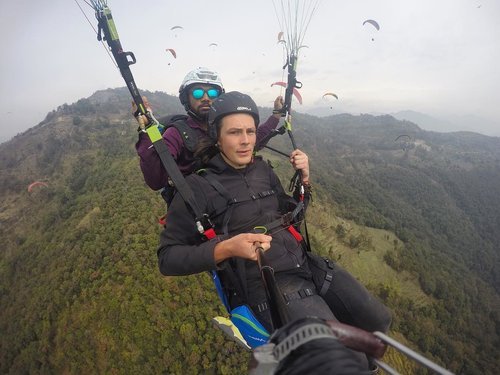
Post pilgrimage trip to Pokhara, February 2019
For some time, Tibetan Buddhism has been a source of refuge for me, provide meaningful perspectives for making sense of the world within and without. Amongst these teachings is the concept of the Bardo, am intermediate state of being often associated with life-death cycle, but also points of transition within the constant cycle of becoming and fading away. In various ways, the pilgrimage was a Bardo between finishing the long journey of formal education and the beginning of my research career and arts practice, allowing the chance for contemplation and attendance to physical, mental and spiritual well being.
Since getting back to Australia, I’ve been fortunate to have a slower pace, moving to the tranquil surrounds of the Adelaide Hills. In this transition, I’ve been fortunate to continue with my arts practice, teaching at the Conservatorium as well as privately, and working on various projects around South Australia.
In March, I began my involvement with Equilibrium, a three year Country Arts SA-funded project exploring the acoustic environments of mental health units across regional South Australia. Through a collaborative, exploratory process, contemporary artists Vic McEwan, John Simpson, Tristan Louth-Robins and I are investigating and creatively engaging with communities in mental health units and public spaces between Whyalla, Berri and Mount Gambier. Tristan’s reflections on our travels to Quorn and Whyalla, available here, encapsulate our initial experiences with this exciting project.
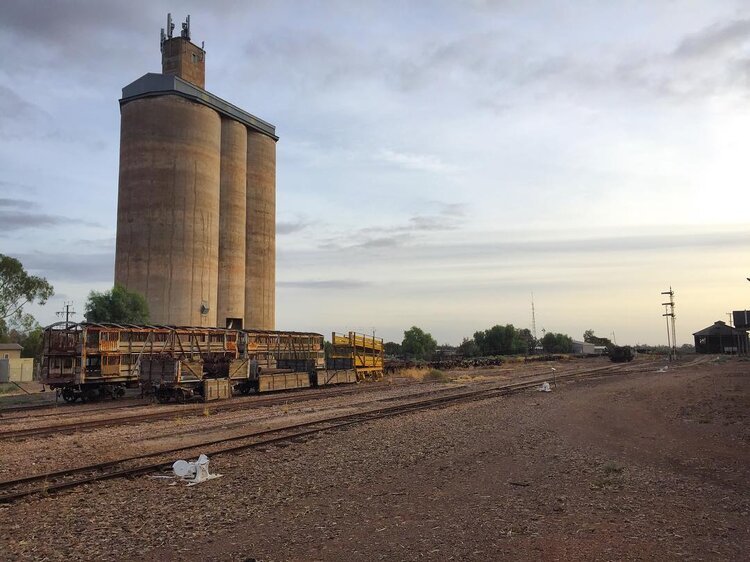
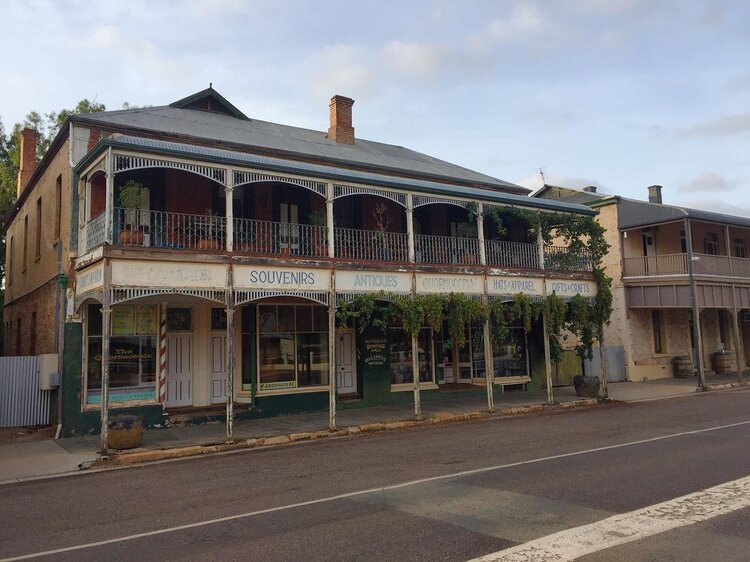
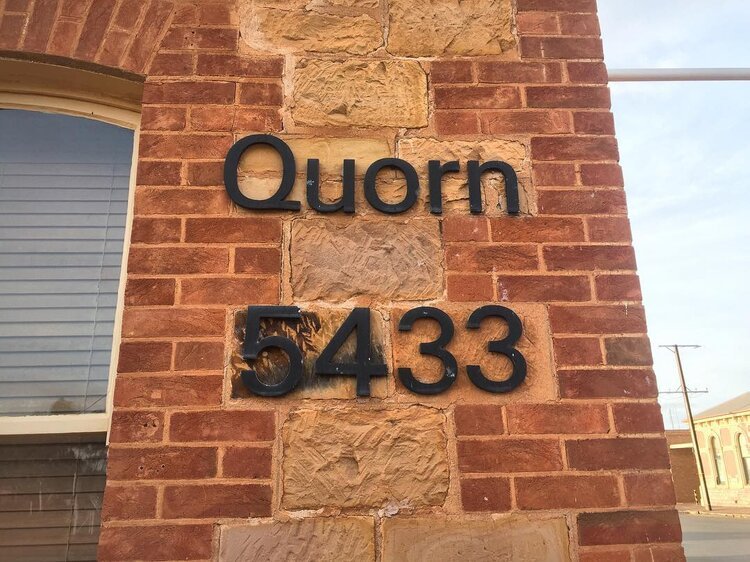
reconnaissance for Equilibrium, March 2019: scenes from Quorn
reconnaissance for Equilibrium in Mount Gambier, March 2019: visiting the Umpherston Sinkhole and Blue Lake
Then in April, the Featherstone Sound Space was launched. Funded by an Arts South Australia grant, the Sound Space is Australia’s first permanent, urban surround-sound installation exhibition site, and builds on the Featherstone Place installation mentioned previously. So far in 2019, we’ve had the joy hosting installations by SA sound artists Jason Sweeney and Tristan Louth Robins, with more by Sasha Grbich and myself on the way. Coming up, next year, the Space will present four new commissions by Christopher Williams, Leah Blankendaal, Keira Simmons and Louis Bullock. More information on the Sound Space and its exhibitions can be found here.
In May, I facilitated Riverland Biosphere Soundscape Lab, which I facilitated held at Calperum Station in South Australia’s Riverland on May 24-26, 2019. Funded by Country Arts SA and part of the international Biosphere Soundscapes program developed by Leah Barclay, the Lab brought together artists, scientists and community members who took part in field recording workshops, creative work listening sessions, expert presentations and group discussions. A highlight of the Lab was a visit to the TERN (Terrestrial Ecosystem Research Network) OzFlux Supersite tower in the Calperum Mallee, which has monitored the mallee canopy since 2011, with ongoing long-duration acoustic recordings occurring daily since 2013. Since our May Lab, I’ve been able to present a talk on this program, exploring arts, science and community perspectives, at both the TERN National OzFlux conference as well as in the Featherstone Sound Space. More information and photographs of the Lab is available here.
In a completely contrasting sphere of my work, I’ve had the wonderful opportunity to musically direct three shows this year. Having spent many years with Murray Bridge Players and Singers, my connections with the Adelaide scene are much more recent (as above with Shrek and Wicked lasted year), and so it has been a privilege to work on three shows - High School Musical Jr. with Adelaide Youth Theatre, Strictly Ballroom with Matt Byrne Media, and Beauty and the Beast with Whyalla Players - in 2019. To cast, crew, orchestras and production teams (Thomas and Rosanna for HSM Jr.; Matt, Thomas, Tara and Jen for Strictly Ballroom; and Kylie, Paige, Matt and Robyn for BATB), many thanks for the opportunity to work alongside and learn from your collective theatrical experience.
scenes from the Riverland Biosphere Soundscape Lab, May 2019
For now, I will leave things here, but I’ll be in touch again very soon with more information on current and upcoming projects, including a residency at Mount Gambier’s Sir Robert Helpmann Theatre and Land Arts Retreat, the Australian premiere of Considering Matthew Shepard, and an upcoming exhibition of environmental art entitled Solastalgia.
With much thanks for your ongoing support and all best wishes,
Jesse
